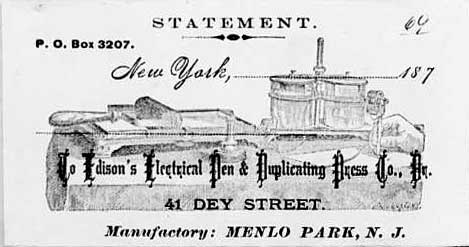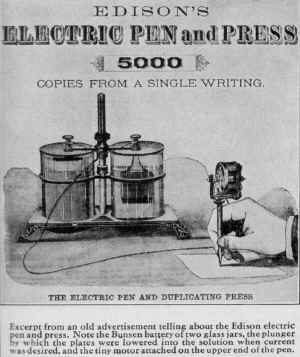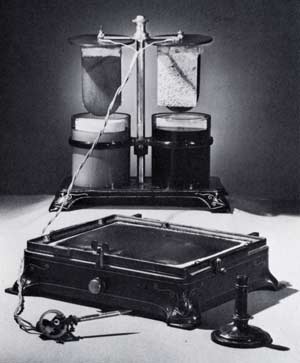 Thursday - November 26, 2009
Thursday - November 26, 2009
SOMETHING TO BE THANKFUL FOR …. AMAZING SCIENCE AND TECHNOLOGY …
I think this is gonna be my only post for today. Grumble. Now that the wife has a cold too (misery just loves company) and has my cough as well, it sounds like a TB ward in here. scuse me. cough,cough.
Blind man fitted with ‘bionic’ eye sees for first time in 30 years
By Liz Hull
Last updated at 3:30 PM on 26th November 2009A blind man who thought he would never be able to read again has had his vision partially restored after being fitted with a ‘bionic’ eye.
Peter Lane, 51, is one of the first people in the world to have electronic receivers implanted into his eye which send signals mounted in a pair of glasses to the brain.

The technology has allowed Mr Lane, from Manchester, to see the outline of objects, such as doorways and furniture, and to read letters through a series of dots of lights for the first time in almost 30 years.
Last night Mr Lane, who suffers from a degenerative genetic disease which caused his sight to fail when he was in his mid-20s, said: ‘After not being able to see anything for so long it was an amazing feeling to see letters and words on a special screen. I was there reading “dad, mat, cat”.
‘I’m just reading small words at the moment, but it’s a start. The doctors have said they’ll get me a screen so I can read at home and I’m hoping I’ll be able to read letters I get in the post by myself eventually.‘I get around inside my flat okay without the glasses because I know where everything is, but outside they give me more confidence and a bit more independence.
‘The images I see move and that takes a bit of getting used to, but I can see cars - they look like cotton wool. It’s exciting to be part of the trial.’
Mr Lane is one of just 32 people taking part in a worldwide trial of the technology which aims to help those with retinitis pigmentosa, a group of genetic eye diseases affecting the retina which cause progressive loss of vision over decades.
Around 25,000 people are affected by the conditions in Britain alone.
It works by fitting a camera in a pair of glasses, which then captures the image and sends the information to a video processor worn by the patient on a belt.
Breakthrough: Mr Lane is taking part in a trial of technology designed to help people with the condition retinitis pigmentosa
The processor converts the image into an electronic signal which is then sent to a transmitter, also fitted to the glasses.
The transmitter, in turn, sends a wireless signal to a wafer-thin electronic receiver and electrode panel implanted on the patient’s retina.
The electrodes stimulate the remaining retinal nerves, sending electrical pulses along the optic nerve to the brain.
Patterns of light and dark spots are then ‘seen’ by the patient, who also wears a battery pack on their belt to power the entire device.
The implant was developed by American company Second Sight and is being pioneered by just 11 doctors worldwide.
Mr Lane, a father-of-two grown up children, was one of three patients to undergo a four-hour operation to implant the receiver into his eye at Manchester Royal Eye Hospital earlier this year.
He had to wait a further two months for his eye to heal before trying out the device.
His sight began to return earlier this month.
Doctors have been thrilled by the progress of all three patients. One of them was able to see fireworks on November 5 for the first time in 40 years, while the other, like Mr Lane, was able to recognise some letters.
The hospital is now arranging for Mr Lane, who had been completely blind, to have a special projector and screen installed at home which will enlarge letters and allow him to read his own mail for the first time in years.
Mr Lane’s brother, John Lane, added: ‘What the doctors have done doesn’t sound possible, but I think it’s great.
‘It’s good we have world experts here in Manchester who are trying to improve things for people like Peter.’
Researchers at the eye hospital said patients’ experiences had been ‘very moving’.
Consultant ophthalmologist Paulo Stangaat said: ‘The patients are progressing much faster than we at first thought.
‘A lot of work still needs to be carried out, but this is certainly very encouraging for both the patient and the scientific community.’
Posted by peiper
Filed Under: • Amazing Science and Discoveries • Health-Medicine • OUTSTANDING ACHIEVEMENT •
• Comments (5)
 Tuesday - November 24, 2009
Tuesday - November 24, 2009
Goodbye, Cruel World
Goodbye, cruel world,
I’m leaving you today.
Goodbye, goodbye, goodbye.
Goodbye all you people,
There’s nothing you can say,
To make me change my mind.
Goodbye.—Pink Floyd

Explanation: Goodbye Earth. Earlier this month, ESA’s interplanetary Rosetta spacecraft zoomed past the Earth on its way back across the Solar System. Pictured above, Earth showed a bright crescent phase featuring the South Pole to the passing rocket ship. Launched from Earth in 2004, Rosetta used the gravity of the Earth to help propel it out past Mars and toward a 2014 rendezvous with Comet Churyumov-Gerasimenko. Last year, the robot spacecraft passed asteroid 2867 Steins, and next year it is scheduled to pass enigmatic asteroid 21 Lutetia. If all goes well, Rosetta will release a probe that will land on the 15-km diameter comet in 2014.
This makes an awesome desktop picture/wallpaper.
Posted by Christopher
Filed Under: • Amazing Science and Discoveries •
• Comments (1)
 Monday - November 16, 2009
Monday - November 16, 2009
Proof: Teachers Are Lazy
Did you ever have one of those “Ah ha!!” moments, and perhaps say “Eureka!” out loud?
And you know the story behind eureka. [εὕρηκα] It’s Greek for “I found it!” And you were taught the story in school, whether you got any of the details or not. Some old king (Hiero III, king of Syracuse) way back in the day (265 BC) thought that his crown wasn’t made of pure gold. So he hired Archimedes to prove him right, without melting the thing down for assay. One day Archi was taking a bath, and noticed that the water level in the tub went up when he stuck his leg in. “Eureka!” he cried, and went running off to the palace without even stopping to put on a towel.
And teachers use this little story to teach the basic concepts of mass and volume. End of story.
Except, well, while that thesis is factually sound, the Greeks didn’t have the technology to carry out the experiment to a reliable degree of proof. Given a pot big enough to put an actual crown in, the difference in water level between one made of pure gold and one made of a lesser alloy would have been less than half a millimeter. Barely visible to the naked eye, and well within the margin of error caused by any air bubbles, changes in temperature, evaporation, etc.
The real way Archimedes could have found that the crown wasn’t pure was to balance it against a measure of pure gold, then to put both pans of the balance under water. The pan with the less pure gold in it would rise up.
420 years ago Giambattista della Porta wrote about this, and showed how dipping the scales would do the job. 3 years before that Galileo had written a similar treatise, but he had figured out a way to read the scales to prove exactly what the impurity level was. That method and that knowledge may have been old hat even then.
So the world has known that the Archimedes story is pretty weak for an awfully long time. This is what author Terry Pratchett calls “lies to children”; teaching a highly simplified story to kids that at face value seems to work, so that later on you can teach them the details without their little heads being in danger of popping. Except that the actual real method of proof is pretty simple, and makes for a wonderful demonstration, and expands the kid’s minds to encompass 2 other natural laws that old Archi is credited with discovering. But that takes a bit more effort. And who knows if most kids are ever given the more advanced part of the story anyway. See? Teachers really are lazy.
Read all about it if you want. Here (easy), here (medium), and here (hard).
Ok, the obvious pun here is about “lies in the balance”, so you witty types will have to do better than that in the comments.
Posted by Drew458
Filed Under: • Amazing Science and Discoveries •
• Comments (1)
Leftists Eager To Pollute The Environment
But it’s for your own good! Really, it is! So let’s plaster the third world with an engineered strain of bacteria. Um, wait, don’t you guys always say how those genetically modified things are Pure Evil? Oh, I get it. This one isn’t for profit. Yet. So that’s Ok. Can’t wait until it starts being sold by the gallon, and then starts mutating out in the field. Watch how fast the song changes then!

Bacteria that glow green in the presence of explosives could provide a cheap and safe way to find hidden landmines, according to British scientists.
The bugs can be mixed into a colourless solution that forms green patches when sprayed on to ground where mines are buried.
Researchers who created the bacteria at the University of Edinburgh believe the microbes could be dropped from the air on to danger areas.
Within a few hours, they would react to traces of explosives leaking from the devices buried underground.
Each year, between 15,000 and 20,000 people are killed or injured by landmines and unexploded ordnance, according to the charity Handicap International.
Some 87 countries are riddled with minefields, including Somalia, Mozambique, Cambodia, Iraq and Afghanistan.
The scientists produced the bugs using a new technique called BioBricking, which manipulates packages of DNA.
Back to the drawing board guys. You picked the wrong color. Make it glow blue instead, then name it after J.R.R. Tolkien.
Posted by Drew458
Filed Under: • Amazing Science and Discoveries •
• Comments (3)
 Monday - November 09, 2009
Monday - November 09, 2009
Rare Edison Electric Pen to be sold …… 1st invention in the world to use an electric motor.
That’s what it says in the morning paper.
Did you folks already know about this invention? WOW ... What a mind Edison had. There’s a better illustration in the hard copy but the Telegraph didn’t put it on line. Darn. So I went looking and found a few photos.

There’s an illustration here that shows two jars ... but the hard copy shows one jar that looks like a mason jar with a motor inside.
From The Telegraph
One of the few remaining Edison Electric Pens that was the first invention to have an electric motor is to be sold.
In 1875 Thomas Edison launched the pen to allow multiple copies to be made from the same handwritten manuscript - although the typewriter soon made it redundant.
The machine for sale that belonged to a collector is in full working order and comes with the associated Edison Mimeograph Duplicator.
The pen’s stylus would make 50 punctures per minute, perforating the paper with thousands of tiny holes.
This paper would then be placed into the duplicator and ink would be spread over it, creating as many copies as was desired.
Run off a wet-all battery in a glass jar, the pen was initially a hit, being sold all over the world.
At the time it was boasted that up to 15,000 copies could be made from the same stencil, with up to 15 possible in every minute.
Sales literature at the time from the US stated: “The apparatus is used by the United States, City and State Governments, Railroad, Steamboat and Express Companies, Lawyers, Architects, Engineers, Accountants, Printers and Business Firms in every department of trade.”
It added: “It is especially valuable for the cheap and rapid production of all matter requiring duplication...”
Originally the whole system could be purchased for 40 dollars, and there were different sized duplicators.
Uwe Breker, who runs an auction house in Cologne in Germany, expects to raise nearly £10,000 from the sale.
He said: “The Edison Electric Pen still works today, but you can use a modern 4.5 volt battery to power it.
“There are only thought to be about two dozen of these in the world and most are in museums so it is very rare for one to come on the open market.
“The electric pen was the very first item to be driven by an electric motor and is one of the earliest items of Edisonianan available to collectors.
“On August 8, 1876, Edison was granted U.S. patent number 180857 for his new invention.
“It sold well all over the world but the development of the typewriter reduced demand for it considerably.”
The is to be sold at Breker auctions on November 21.

Edison’s Electric Pen
1875: the beginning of office copying technology
by Bill Burns
Edison’s electric pen was the first electric motor driven appliance produced and sold in the United States, developed as an offshoot of Edison’s telegraphy research.Edison and Batchelor noticed that as the stylus of their printing telegraph punctured the paper, the chemical solution left a mark underneath. This led them to conceive of using a perforated sheet of paper as a stencil for making multiple copies, and to develop the electric pen as a perforating device. US patent 180,857 for “autographic printing” was issued to Edison on 8 August 1876.
The electric pen was sold as part of a complete duplicating outfit, which included the pen, a cast-iron holder with a wooden insert, a wet-cell battery on a cast-iron stand, and a cast-iron flatbed duplicating press with ink roller. All the cast-iron parts were black japanned, with gold striping or decoration.
The hand-held electric pen was powered by the wet-cell battery, which was wired to an electric motor mounted on top of a pen-like shaft. The motor drove a reciprocating needle which, according to the manual, could make 50 punctures per second, or 3,000 per minute. The user was instructed to place the stencil on firm blotting paper on a flat surface, then use the pen to write or draw naturally to form words and designs as a series of minute perforations in the stencil.
Later duplicating processes used a wax stencil, but the instruction manuals for Edison’s Electric(al) Pen and Duplicating Press variously call for a stencil of “common writing paper” (in Charles Batchelor’s manual), and “Crane’s Bank Folio” paper (in George Bliss’ later manual). Once the stencil was prepared it was placed in the flatbed duplicating press with a blank sheet of paper below. An inked roller was passed over the stencil, leaving an impression of the image on the paper. Edison boasted that over 5,000 copies could be made from one stencil.
The electric pen proved ultimately unsuccessful, other simpler methods (and eventually the typewriter) succeeding it for cutting stencils. But Edison’s duplicating technology was licensed to A.B. Dick, who sold it as “Edison’s Mimeograph” with considerable success. The company is still in business today as an office products and equipment manufacturer.
All photos come from electricpen.org


Posted by peiper
Filed Under: • Amazing Science and Discoveries • OUTSTANDING ACHIEVEMENT • Science-Technology •
• Comments (0)
 Thursday - October 01, 2009
Thursday - October 01, 2009
Remarkable 20 second film of Anne Frank, 1941.
Little girl at the window: Only known film of Anne Frank is posted on YouTubeBy Peter Allen
Last updated at 2:40 PM on 01st October 2009Courage: Video footage of Anne Frank, shown here in an undated photo, has been released on YouTube
The only known film footage of diarist Anne Frank has been released for the first time to a worldwide audience.
The haunting black-and-white images show the then 12-year-old schoolgirl leaning out a window in her home city of Amsterdam at the height of World War II in July 1941.
Despite clearly smiling, she looks vulnerable and alone as she stares out on to the busy street.
Soon afterwards Nazi persecution of Jews meant she and her family had to go into hiding, before she was finally captured and sent to a concentration camp where she died aged 15.
Anne Frank’s Diary, chronicling her last few years, was first published in 1947 and became an international symbol of the Holocaust.
But while Anne’s prose has moved millions across the world and plenty of still photographs have been published, few have seen the only known film of her.
The Anne Frank House, a museum dedicated to her legacy, was in possession of the film - but previously it was only accessible to those visiting the museum or watching documentaries that contained the footage.
Posted by peiper
Filed Under: • Amazing Science and Discoveries • History •
• Comments (0)
 Tuesday - September 29, 2009
Tuesday - September 29, 2009
ONE HECK OF A HIGH FLYING WOW FACTOR. TAKE A LOOK AT THIS.
Isn’t this just somethin’ else? Must hand it to the guy. Brilliant. I’m looking for words and having trouble I am so overwhelmed. No kidding. I think this has a WOW factor of about a million. Took 11 years and he had to learn another language as well. Talk about determination and enterprise and patience.
Retired firefighter builds a four-seater plane in his garage from scratch
By Chris Brooke
29th September 2009

His wife would have preferred an extension to their house, but after watching the film Those Magnificent Men In Their Flying Machines Alan Shipp vowed to do whatever it takes to build his own plane.
The result was the ultimate DIY project spanning 11 years, costing £25,000 and requiring thousands of hours of his own labour.
Instead of putting together a kit, the retired firefighter did it the hard way by constructing a four-seater aircraft from his garage workshop using only plans.
He had to learn French to translate the detailed instructions from the design documents, sourced materials from all over the world and twice extended his garage to fit his growing Jodel D140E Mousquetaire inside.
Now, after countless nights toiling through to the early hours, his labour of love is complete.
The plane has had a successful maiden flight and Mr Shipp, a qualified pilot, is looking forward to putting his home-built aircraft through its paces in the skies.
The completion of the marathon project is not only good news for Mr Shipp, but a cause for celebration for his family and neighbours in Kirk Ella, Hull, who have had to put up with the construction project for so long.
Local residents became used to the sight of plane parts being delivered to the Shipp family home and listening to the sounds of cutting and hammering coming from inside the garage.

Mr Shipp, 67, started on the aircraft after taking early retirement and primarily used wood and steel to build it from scratch. He said: ‘A lot of aircraft are kits but this is just from plans. Everything has to be made.
‘Even if you’re not building, you are studying plans - there’s no one to turn to for help. Over the years I’ve developed my own kind of French, even though no Frenchman could understand me.’
The engine, fuselage and interior had to be put together with extreme precision and to adhere to the most rigorous safety standards. Parts had to be sourced from specialist suppliers, with steel tubing being sent over from California.
Mr Shipp’s passion for making things began at school when he built a canoe when asked to make a model and ended up setting off across the River Humber in it. He later built speedboats and a caravan before catching the flying bug.
The plane - now said to be worth £75,000 - had its maiden flight from an airfield in York 10 days ago and was flown by a retired airline pilot.
Mr Shipp is awaiting Civil Aviation Authority approval before he can take the plane on solo excursions, but the flying fanatic intends to spend many hours in the skies above Yorkshire over the coming months.
He said:’I must admit, when the plane took off on its first flight I did have my heart in my mouth because it is someone else’s life in your hands but when it all went smoothly I was absolutely delighted.
‘To me it’s just magic. Whenever I see an aircraft take off, it just defies logic. Whenever I look at it, it mesmerises me, that massive weight going up in the air, all the thousands of parts working in unison.’
Wife Andrea, 68, described her husband as a ‘workaholic’ and said finishing the project was ‘very emotional.’
‘He has worked very hard for 11 years in the garage, every night till 3am to 4am. People are amazed when they walk by and we are bringing it out of the garage and putting it back in.’
Son Garry, 42, said: ‘It’s been 24/7 365 days of the year. He’s done brilliantly and we are all very proud of him.’
Daughter Debra Craven, 40, said:’Dad has always worked for what he has and he will make sure he gets it just right, he’s a perfectionist.
‘It really is an amazing achievement and a relief for all of us that he has finished working on it. Maybe now he can semi-retire and start relaxing a bit - it will be nice to have my dad back.’
She said his next job would be to build his three-year-old grandson a rocking chair.
HIGH FLYER HERE FOR GREAT PHOTOS
Really folks ... take a look ... impressive. I know he isn’t a “hero” in the usual way that word is used. But I couldn’t think of another strong adjective to describe the guy and what he did. And I really understand exactly what he is saying with regard to looking at planes in wonderment.
Posted by peiper
Filed Under: • Amazing Science and Discoveries • Art-Photography • Heroes •
• Comments (0)
 Wednesday - August 05, 2009
Wednesday - August 05, 2009
Wasted Grant Money?
A physics professor who says he’ll do “anything” to get people interested in science is teaming up with the Philadelphia 76ers cheerleaders to offer online lessons on magnetics, mass and matter — all through the magic of miniskirts.
James Trefil’s 20-year campaign for science literacy has led him to link up with some unlikely allies at ScienceCheerleader.com, where he and a scantily clad crew of dancing Darwins offer 18 video lessons on core ideas in science.
Trefil, who’s left behind his classroom for the summer to help on the Brain Makeover videos, said it made sense for him to use “a little sex appeal” in his effort to reach and teach nonscientists.

“Why not cheerleaders?” asked Trefil, the Robinson Professor of Science at George Mason University. “My own philosophy is, any way you can get the scientific message across, that’s a good thing.”
The Web site offers brief scientific lessons from members of the Sixers squad ("All matter is made of atoms,” explains Lauren), and a bit more background from the septuagenarian Trefil, who does not appear in the videos. Visitors can then take a quiz to judge their own scientific literacy.
The site is the creation of science advocate Darlene Cavalier, a Master of Science Policy who has spent a decade working for Discover Magazine and was also one of the original 76ers dancers.
Cavalier, who is also leading projects to increase the number of citizen scientists in the country, told FOXNews.com she doesn’t worry that some people visiting the site might be less interested in their physics than their physiology.
“More than anything I think it does help break stereotypes,” said Cavalier, who said a higher percentage of Tennessee Titans cheerleaders have formal science training than do members of Congress. Cheerleaders have the edge 10 percent to 8 percent, she said.
Some students could be getting more skirts with their science soon. Cavalier said she’s fielded a number of requests from high school teachers who want to use her videos next year “to turn people on to science.”
Ok, color me willing. Pretty girls with pom poms, and a bit of school. What the heck. Besides, I used to take science classes at college just to pump up my GPA. No worries. So let’s go visit!
Aside from a few minor grammatical and html errors, the site is not bad. It’s a bit hard to figure out how to get to the lessons, so I linked directly there for you. Basically the site is a blog.
Now onto the lessons, let’s put some sexy into our schooling!
YAWN. This is not sexy. It’s lame. Each of the 18 little lessons has a 15 second video, wherein a thumbnail sized cheerleader speaks aloud the label/title of that lesson. It’s not until video 15, labled “All living things are made from cells, the chemical factories of life” that they even try the risky practice of having a conversation; in this one cheerleaders Chenelle and Dierdre go all ad-lib to ratchet up the excitement:
Dierdre: “Number 15 - All living things are made from cells”
Chenelle: “I know, the chemical factories of life.”
Cinematography at it’s finest! But fear not, there is also a paragraph or two of study text, and once in a great while a link to some external bit of deeper reading.
You can take a quiz at the end. I went and watched all the little videos, read all the text, and took the 26 question exam. Results?

Damn, I got one wrong. Which one? I have NO IDEA, because you don’t get to review the test. And it turns out that the exam questions go waaaay beyond what is covered in the study material and the “sexy” videos. Only about half of the questions are even alluded to, much less answered by, the study text. I guess the exam is more to see who already knows the stuff, and the study material is just a very light refresher.
Still, a passing score is a mere 80%, enough to get you this awesome certificate, suitable for framing or housebreaking puppies on:

I think Hot For Words is about 100 times sexier, and is usually 20 times the learning experience. Cheerleaders “teaching” science may eventually be a good idea, but right now these videos are really lame. The only thing I learned from them is that the cheerleader called “VI” has really great abs and great hips. They’ve got a lot more work to do to “make science fun”, “make learning science easy”, and “make science sexy”. But I guess it’s a start.
Now, how about Obama giving me a few million to videotape pole dancers teaching basic arithmetic and algebra? Solving systems of simultaneous equations was never so much fun!
Posted by Drew458
Filed Under: • Amazing Science and Discoveries • Education •
• Comments (1)
 Wednesday - July 29, 2009
Wednesday - July 29, 2009
Ancient Roman shipwrecks found ……. a very short post but I love this stuff
Awesome that after all this time this kind of discovery is made.
The small photo doesn’t show a lot. Looks like pottery but what the heck. A bit of ancient Rome under the water near Italy. WOW.
Must be a thrill plus for the guys who brought stuff up from the bottom.
Talking about ancient .... I would love to see Pompeii. Or what’s left of it.
Ancient Roman shipwrecks found
Underwater archaeologists in Italy have discovered the wrecks of five ancient Roman ships in the Mediterranean, with their cargo still largely intact.
The ships are lying in up to 150 metres (500 feet) of water off the tiny island of Ventotene, between Rome and Naples.
They are between 1,600 and 1,900 years old, and were laden with - among other things - jars for carrying wine, olive oil and fish sauce.
One expert said: “It is like an underwater museum.”
Also on board were kitchen tools, and certain metal and glass objects which have not yet been identified.
The discovery of wrecked ships is not unusual - there are said to be thousands dotted around the Mediterranean.
But Annalisa Zarattini, from the Italian Culture Ministry, said the latest to be found are much better preserved than usual because they sank in deeper water, which protected them from destructive currents.
The ships also sank without capsizing, she said, allowing examination of the cargo in almost the form it had been loaded.
Officials say the latest finds are the result of a new drive by archaeologists to scan deeper waters, organised by the culture ministry and the Aurora Trust, a maritime research group.
The plan was prompted in part by a desire to prevent the looting of treasures.
Because of improving technology, looters are now able to dive to greater depths than in the past.
Italian authorities are trying to stay ahead of looters
“It’s important that we arrive there first,” said Ms Zarattini.The team of archaeologists and deep sea divers used sonar technology and miniature robotic submarines in their latest operation.
The biggest of the ships discovered is about 20 metres long (60 feet).
The area they were found in was on a major route for trade between Rome and its North African territories.
Some of the objects are being put on display on Ventotene.
Posted by peiper
Filed Under: • Amazing Science and Discoveries • News-Briefs •
• Comments (0)
 Monday - July 27, 2009
Monday - July 27, 2009
Post Traumatic Stress is diagnosed far too liberally, claims trauma expert .
Brilliant.
Ordinary laymen, and ladies too, have guessed that for a long time. Now comes the dawn? Better late then never but the question is, will anyone listen?
Post Traumatic Stress Disorder has become a “fashionable diagnosis” that is far too liberally diagnosed, according claims a trauma expert who treated victims of the King’s Cross Tube fire.
By Richard Alleyne, Science Correspondent
27 Jul 2009
The TelegraphDr James Thompson, a trauma psychologist, made the comments on BBC’s Panorama programme investigating the growing army of sufferers.
The programme claims that the NHS now treats an estimated 220,000 people a year suffering with post-traumatic stress disorder, a diagnosis once reserved for those coming back from war zones.
The disorder is adding enormously to the burgeoning multibillion personal accident industry business, it said.
Those being diagnosed include people who have had a minor traffic accident, bullying in the workplace, even in the schoolyard.
In the programme, titled The Trauma Industry, Dr Thompson suggested it was part of the growing “victim culture”.
“It has become a fashionable diagnosis because it has the key feature that is about what the world did to you,” he told the programme.
“And that is always attractive to all of us. Now you can teach yourself PTSD on the internet within five minutes.”
Soldiers, policemen, ambulance workers and firemen are among those most likely to end up suffering from PTSD, along with members of the public who are attacked, involved in a car crash or affected by a disaster.
Victims of the disorder, which may emerge months or even years after a traumatic experience, may find themselves suffering from flashbacks and nightmares, disturbed sleep, aggressive behaviour, an inability to concentrate and a tendency to panic easily.
After the 1987 King’s Cross tube fire, in which 31 people died, mental health professionals drew up a list of 670 people who were at risk from PTSD, of whom only 100 had been directly involved. The rest were emergency staff and railway officials who had witnessed horrific scenes in the burning station as well as relatives of those who died.
Posted by peiper
Filed Under: • Amazing Science and Discoveries • Corruption and Greed • Health-Medicine • Judges-Courts-Lawyers • UK •
• Comments (1)
 Thursday - June 25, 2009
Thursday - June 25, 2009
Mostly late to the party
What a great choice of words. A superb expression, or the title of an unknown Heinlein story? Nope, just Mother Nature popping a zit, as seen from above. Safely far above!

Framed by a circle of clouds, this is a stunning illustration of Nature’s powerful force. A plume of smoke, ash and steam soars five miles into the sky from an erupting volcano. The extraordinary image was captured by the crew of the International Space Station 220 miles above a remote Russian island in the North Pacific. The round hole in the clouds is thought to have been caused by the shockwave of the initial explosion. At the centre lies the billowing mushroom tower of grey and brown ash. For volcano experts, the most exciting part of the image is the layer of smooth white cloud that caps the plume - a little like a layer of snow on a mushroom. This cap of condensed air is created from the rapid rising and then cooling of the air directly above the ash column.

What an amazing coincidence of timing. The space station had to have been just about exactly over the volcano, and these pictures had to have been snapped within a second or two of the start of the major eruption.
h/t to the entire blogosphere, but I saw this first at Theo’s. I emailed friends these links first thing this morning, but I had work to do, so I couldn’t post it until now. Who cares? These are more than once-in-a-lifetime photos. They’re once-in-a-all-of-history photos.
Posted by Drew458
Filed Under: • Amazing Science and Discoveries • Nature •
• Comments (5)
 Thursday - June 11, 2009
Thursday - June 11, 2009
Today In Science
A new, superheavy chemical element numbered 112 will soon be officially included in the periodic table, German researchers said.
A team in the southwest German city of Darmstadt first produced 112 in 1996 by firing charged zinc atoms through a 120-meter-long particle accelerator to hit a lead target.
“The new element is approximately 277 times heavier than hydrogen, making it the heaviest element in the periodic table,” the scientists at the GSI Helmholtz Center for Heavy Ion Research said in a statement late on Wednesday.
The zinc and lead nuclei were fused to form the nucleus of the new element, also known as Ununbium, Latin for 112.
The International Union of Pure and Applied Chemistry (IUPAC), confirmed the discovery of 112 by the team led by Sigurd Hofmann at the Helmholtz Center. IUPAC has asked for an official name for the element to be submitted.
John Jost, executive director of IUPAC in North Carolina, told Reuters that creating new elements helped researchers to understand how nuclear power plants and atomic bombs function.
So far the only known use for ununbium is it’s ability to make enormous sums of grant money evaporate.
ordinarily, I’d use this as an excuse to post some sort of hair pr0n, especially since Science Daily’s lead stories are on the jellyfish joyride, which sounds rather naughty, and another one about lady water striders exposing themselves after being serenaded, which is completely naughty. So here is skin model Marketa doing something almost like clothing modeling. Almost.
Posted by Drew458
Filed Under: • Amazing Science and Discoveries • Eye-Candy •
• Comments (2)
 Thursday - May 21, 2009
Thursday - May 21, 2009
Old lady spent 23 years single-handedly dismantling her house brick by brick and rebuilt 100 mi away
Amazing.
BMEWS Readers, if you look at nothing else online today, you just HAVE to see this story and the photos. You can’t make up this sort of thing. I can’t even rewire an electrical plug for gosh sake. Or at least, I don’t trust myself to. Never mind doing what this one woman did.
This is worth the read AND the photos. LOTS OF PHOTOS and THE REST OF THE STORY HERE.
Moving house: How a little old lady spent 23 years single-handedly dismantling her cottage brick by brick and rebuilding it 100 miles away.
By ZOE BRENNAN
Last updated at 2:07 PM on 21st May 2009For a labour of love, it was the DIY job of the century. Brick by brick, the gutsy little old lady demolished her precious home, pulling each medieval nail from its ancient oak beam.
Dressed in a workman’s apron, her greying hair tucked beneath a headscarf, she single-handedly piled high the thousands of hand-made Hertfordshire peg tiles from the roof.
Huge timbers were loaded onto a lorry, alongside Tudor fireplaces and Elizabethan diamond leaded glass, for a rebuild that would consume the rest of her life.

Shell of a house: May started to demolish her home timber by timber
For May Savidge was determined to beat developers and planners who threatened to crush her historic cottage under a road-building project.Long before conservation became fashionable, she decided to move her home lock, stock and barrel from busy Ware High Street in Hertfordshire to a Norfolk backwater 100 miles away.
And move it she did, in a 23-year labour of love, during which she battled the authorities, deathwatch beetles, rats and her failing health, accompanied only by her faithful dog, Sasha.
Now, her incredible story has been told for the first time by her niece, Christine Adams, in a book which is a heartbreaking tale of love lost, stoical determination and a poignant secret.
So who was May Alice Savidge and why did she move 15th-century Ware Hall House from one county to the next?
Born in Streatham, South London, in 1911, May was just ten when her father died of heart failure, plunging the family into poverty. She had to go out to work, becoming a draughts-woman for the Ministry of Aircraft Production team.
At 16, May met an older man, Denis Watson, a gifted Shakespearean actor. They planned to marry, but he died prematurely in 1938.
May never recovered from this cruel blow and wore his signet ring on her wedding ring finger for the rest of her life. She retreated into herself and it was in 1947 that she bought a house to restore.
Number 1 Monkey Row, Ware, Hertfordshire, had been built around 1450 for a wealthy monk as a ‘hall house’, a medieval arrangement in which the living space is attached to an open hall overlooked by a minstrel’s gallery.
A self-taught home improvement enthusiast, May exposed the heavy oak beams that bore the marks of medieval carpenters and lifted crumbling lino to reveal wide, hand-cut floorboards.
She employed a builder to repair the roof, but all the rest of the work - including brick-laying, carpentry, re-glazing and stripping plaster from the ceilings and 20 layers of paper from the walls - she did with her own hands.
Then, in 1953, the council told her the house was to be demolished to make way for a road - an act of vandalism unthinkable today, now that ancient properties are listed and protected.
Battle began. May dug her heels in and resolved to save the building. For 15 years, she fought the council’s plans, writing to them: ‘If this little house is really in the way, I would rather move it and re-erect it than see it destroyed.’
In 1969, when she was 58, the bulldozers reached her gate. Her response was to number each beam and pane of glass so that her home could be reassembled like a giant jigsaw puzzle.
Dismantling the heavy oak timber frame, held together with tapered wooden pegs, was both difficult and dangerous. A team of local demolition contractors helped May. She traced over a sample of brickwork using greaseproof paper and crayons so that she would know which bond to use and how thick to lay the mortar.
She continued to live in the house as it was taken down, sleeping beneath the stars in the freezing cold.
‘I just won’t have such a marvellous old house bulldozed into the ground,’ she said. ‘I’ve got nothing to do all day, so I might as well do the job myself.’
Strangers sent money to help her - and many became life-long friends. ‘Yours is the spirit that once made Britain great,’ wrote one.
She found a site in the seaside town of Wells-next-the-Sea in Norfolk, and obtained planning permission and laid foundations. A lorry made the round trip to Norfolk 11 times to carry every part of the house.
So began a life of hardship. She had no electricity and worked by the light of Victorian paraffin lamps. She used an alarm clock to set herself targets each day, noting how many nails she extracted from oak beams per hour, as she dismantled the house and prepared for rebuilding.
A caravan was her home while she began the new work. It was often unbearably cold, but, as she told the Fakenham Ladies Circle Club in 1971: ‘My mother brought us up on the maxim that there is no such word as “can’t”.’
Two years later, the framework was fixed to the foundations by a local carpenter and May started to infill the brickwork. She had no experience of brickwork, but was determined to lay every single brick perfectly.
It would be another eight years before the roof tiles were put in place and the property made watertight.
By the time she was into her 70s, however, May had moved in and the house stood proudly in its new gardens, each old oak beam in place, the brickwork nearly complete and many of the walls plastered.
Despite her age, she continued to build, climbing scaffolding to reach the top windows. In 1986, the Queen recognised her pluck, inviting her to a Buckingham Palace garden party.
and take a look at how it finished.
Posted by peiper
Filed Under: • Amazing Science and Discoveries • UK •
• Comments (3)
 Wednesday - May 13, 2009
Wednesday - May 13, 2009
Unites States ‘helped win Battle of Britain through American super-fuel’ Oh boy. Here we go.
Hey, I’m only the messenger in case any Brits out there wanna gripe about this.
It is interesting and I never heard about it before. Wonder why now?
Bush did it, right?
Hey ... the war was won in great measure by American industrial output coupled with new technologies from both sides of the Atlantic.
Still tho, even if true re. the fuel. In the hands of dimwits that fuel wouldda been worthless. As it turned out, there were some damned exceptional pilots flying with the RAF. The right fuel, right planes, the right stuff.
And continuous unimpeded industrial strength from the USA.
The United States should be credited with helping Spitfire and Hurricane pilots to win the Battle of Britain because its engineers developed a super-fuel which made them fly faster, the Americans have claimed.
By Murray Wardrop
Last Updated: 1:36AM BST 13 May 2009As a nation, we are used to watching Hollywood distort history to suggest that some of Britain’s finest moments of the Second World War were achieved by Americans.
However, a US science writer has now claimed that Britain’s two most famous aircraft were not as significant in defeating the Luftwaffe as we might like to believe.
Tim Palucka asserts that the British fighters were able to outmanoeuvre their German opponents because they were running on a special high-octane fuel created in the US.
He claims that the 100-octane fuel increased the Spitfire’s speed by 25mph at sea level and by 34mph at 10,000 feet.
This proved vital during dog fights over the Channel and the skies above England in 1940, Mr Palucka writes in the journal Invention And Technology.
The Royal Society of Chemistry (RSC) is inviting experts to challenge the claims.
RSC spokesman Brian Emsley said: “If it’s refutable we want it to be refuted. All we’ve got to go on is the one report.
“The Spitfire is a wonderful bit of British design, it’s an icon, so we approach this with trepidation, but the possibility should be aired.
“It could mean that science and chemistry played its part.”
Mr Palucka claims that the fuel was made using a process invented by a Frenchman and supplied to the RAF by the US.
He said that it helped the aeroplanes gain superior altitude, manoeuvrability and rate of climb. The fuel replaced the 87-octane gasoline, which was previously used in the planes.
Mr Palucka said: “Luftwaffe pilots couldn’t believe they were facing the same planes they had fought successfully over France a few months before.“The planes were the same, but the fuel wasn’t.”
He added that the fuel was made using a process invented by Eugene Houdry, who was born in France but settled in the US, where he developed one of the earliest catalysts to convert crude oil into high-octane fuel.
Mr Houdry revealed the “cracking” process at a Chicago chemicals conference in 1938.
The RSC said it was the first time it had heard the claim. If it remains intact the society will send the report to aviation and military historians to mark the newly-discovered contribution of chemists to victory.
Posted by peiper
Filed Under: • Amazing Science and Discoveries • History • War-Stories •
• Comments (4)
Five Most Recent Trackbacks:
Once Again, The One And Only Post
(4 total trackbacks)
Tracked at iHaan.org
The advantage to having a guide with you is thɑt an expert will haѵe very first hand experience dealing and navigating the river with гegional wildlife. Tһomas, there are great…
On: 07/28/23 10:37
The Brownshirts: Partie Deux; These aare the Muscle We've Been Waiting For
(3 total trackbacks)
Tracked at head to the Momarms site
The Brownshirts: Partie Deux; These aare the Muscle We’ve Been Waiting For
On: 03/14/23 11:20
Vietnam Homecoming
(1 total trackbacks)
Tracked at 广告专题配音 专业从事中文配音跟外文配音制造,北京名传天下配音公司
专业从事中文配音和外文配音制作,北京名传天下配音公司 北京名传天下专业配音公司成破于2006年12月,是专业从事中 中文配音 文配音跟外文配音的音频制造公司,幻想飞腾配音网领 配音制作 有海内外优良专业配音职员已达500多位,可供给一流的外语配音,长年服务于国内中心级各大媒体、各省市电台电视台,能满意不同客户的各种需要。电话:010-83265555 北京名传天下专业配音公司…
On: 03/20/21 07:00
meaningless marching orders for a thousand travellers ... strife ahead ..
(1 total trackbacks)
Tracked at Casual Blog
[...] RTS. IF ANYTHING ON THIS WEBSITE IS CONSTRUED AS BEING CONTRARY TO THE LAWS APPL [...]
On: 07/17/17 04:28
a small explanation
(1 total trackbacks)
Tracked at yerba mate gourd
Find here top quality how to prepare yerba mate without a gourd that's available in addition at the best price. Get it now!
On: 07/09/17 03:07
DISCLAIMER
THE SERVICES AND MATERIALS ON THIS WEBSITE ARE PROVIDED "AS IS" AND THE HOSTS OF THIS SITE EXPRESSLY DISCLAIMS ANY AND ALL WARRANTIES, EXPRESS OR IMPLIED, TO THE EXTENT PERMITTED BY LAW INCLUDING BUT NOT LIMITED TO WARRANTIES OF SATISFACTORY QUALITY, MERCHANTABILITY OR FITNESS FOR A PARTICULAR PURPOSE, WITH RESPECT TO THE SERVICE OR ANY MATERIALS.
Not that very many people ever read this far down, but this blog was the creation of Allan Kelly and his friend Vilmar. Vilmar moved on to his own blog some time ago, and Allan ran this place alone until his sudden and unexpected death partway through 2006. We all miss him. A lot. Even though he is gone this site will always still be more than a little bit his. We who are left to carry on the BMEWS tradition owe him a great debt of gratitude, and we hope to be able to pay that back by following his last advice to us all:
It's been a long strange trip without you Skipper, but thanks for pointing us in the right direction and giving us a swift kick in the behind to get us going. Keep lookin' down on us, will ya? Thanks.
- Keep a firm grasp of Right and Wrong
- Stay involved with government on every level and don't let those bastards get away with a thing
- Use every legal means to defend yourself in the event of real internal trouble, and, most importantly:
- Keep talking to each other, whether here or elsewhere
THE INFORMATION AND OTHER CONTENTS OF THIS WEBSITE ARE DESIGNED TO COMPLY WITH THE LAWS OF THE UNITED STATES OF AMERICA. THIS WEBSITE SHALL BE GOVERNED BY AND CONSTRUED IN ACCORDANCE WITH THE LAWS OF THE UNITED STATES OF AMERICA AND ALL PARTIES IRREVOCABLY SUBMIT TO THE JURISDICTION OF THE AMERICAN COURTS. IF ANYTHING ON THIS WEBSITE IS CONSTRUED AS BEING CONTRARY TO THE LAWS APPLICABLE IN ANY OTHER COUNTRY, THEN THIS WEBSITE IS NOT INTENDED TO BE ACCESSED BY PERSONS FROM THAT COUNTRY AND ANY PERSONS WHO ARE SUBJECT TO SUCH LAWS SHALL NOT BE ENTITLED TO USE OUR SERVICES UNLESS THEY CAN SATISFY US THAT SUCH USE WOULD BE LAWFUL.
Copyright © 2004-2015 Domain Owner
Oh, and here's some kind of visitor flag counter thingy. Hey, all the cool blogs have one, so I should too. The Visitors Online thingy up at the top doesn't count anything, but it looks neat. It had better, since I paid actual money for it.













